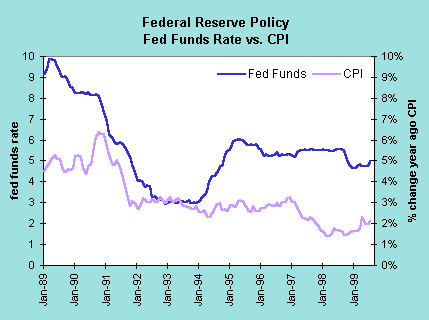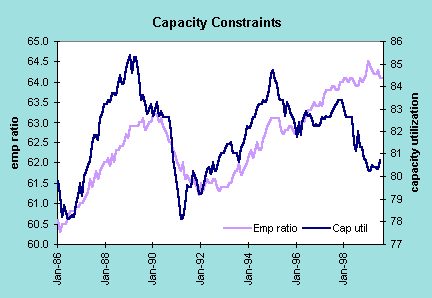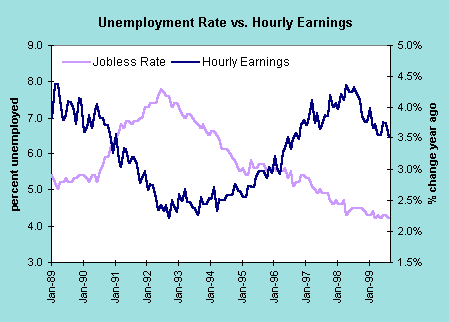By Evelina M. Tainer, Chief Economist
INDICATORS OF INFLATION
FEDERAL RESERVE POLICY
INTEREST RATES
STOCK PRICES

The real (inflation-adjusted) rate of interest indicates the degree of constraint in the financial market. In this case, the federal funds rate (controlled by the Fed) is compared to the yearly change in the CPI. When the CPI and the fed funds rate were equal in 1992-93, it signaled an accommodative policy stance. As the gap widened in the 1990s, it meant that monetary policy grew more restrictive. This is not unusual during an economic expansion, however. Investors are wondering whether the Fed will raise the fed funds rate target 25 basis points to 5.50 percent at the October 5 FOMC meeting.

The Federal Reserve monitors capacity constraints because they indicate where supply bottlenecks are developing and inflation is percolating. The capacity utilization rate in the economy's industrial sector is down sharply from the cyclical highs established in 1995 and again in 1997. The employment-to-population ratio is more comprehensive than the jobless rate in revealing labor market conditions. This ratio dipped recently and depicts a slightly different picture of the labor market than the civilian unemployment rate, which is more foreboding to Fed officials.

When the economy is operating at full throttle, a falling unemployment rate frightens policy-makers as they anticipate that rapidly rising wages will turn into runaway inflation. In fact, wage growth did begin to accelerate in 1995, but peaked over a year ago. Wage growth moderated in the second half of 1998 and early 1999.